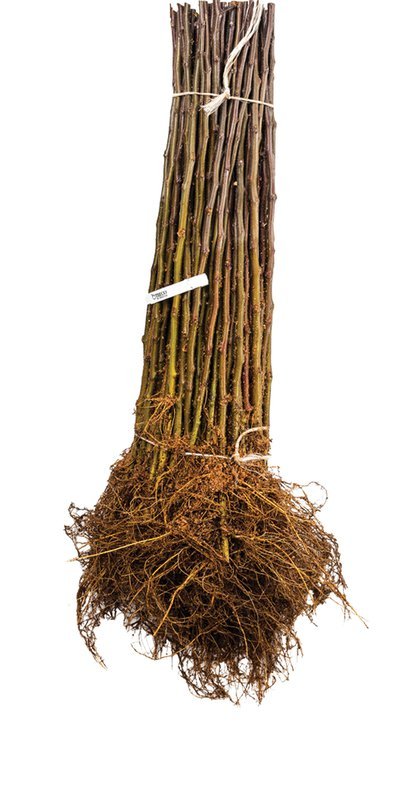 Image 1 of 2
Image 1 of 2

 Image 2 of 2
Image 2 of 2



EMLA 106
MM 106 resulted from a joint program of rootstock breeding carried out by East Malling Research Station and the John Innes Institute. It was derived from a cross between Northern Spy and Malling 1 (a vigorous stock selected from English Broadleaf). A virus-indexed EMLA clone was introduced by East Malling in 1969 - 70.
Pricing | Inventory
MM 106 resulted from a joint program of rootstock breeding carried out by East Malling Research Station and the John Innes Institute. It was derived from a cross between Northern Spy and Malling 1 (a vigorous stock selected from English Broadleaf). A virus-indexed EMLA clone was introduced by East Malling in 1969 - 70.
Pricing | Inventory
MM 106 resulted from a joint program of rootstock breeding carried out by East Malling Research Station and the John Innes Institute. It was derived from a cross between Northern Spy and Malling 1 (a vigorous stock selected from English Broadleaf). A virus-indexed EMLA clone was introduced by East Malling in 1969 - 70.
Pricing | Inventory
-
MM 106 resulted from a joint program of rootstock breeding carried out by East Malling Research Station and the John Innes Institute. It was derived from a cross between Northern Spy and Malling 1 (a vigorous stock selected from English Broadleaf). A virus-indexed EMLA clone was introduced by East Malling in 1969 - 70.
-
EMLA 106 & MM 106 produce trees that are about 70% the size of those on seedling rootstocks.
Since its introduction, it has rapidly become the most widely used rootstock in high latitude countries because of its heavy cropping potential, moderate vigor, freedom from suckering and resistance to woolly aphids (Eriosoma langierum). EMLA 106 is more sensitive to soil moisture than most rootstocks. On dry sandy soils vigor is reduced to less than that of EMLA 7, but on fertile soils, it produces trees similar in size to those on EMLA 2 and EMLA 111.
Trees on EMLA 106 are resistant to potassium deficiency, but they occasionally suffer from magnesium deficiency.
-
EMLA 106 is susceptible to mildew. It is not resistant to collar rot (Phytophthora cactorum). This problem may not be as serious in the future, however, due to the new extensive fungicide research on Phytophthora cactorum control.
-
EMLA 106 stoolbeds produce excellent first-grade rootstocks. Lined-out in the nursery, EMLA 106 produces large calipered, well-branched maiden trees.
-
EMLA 106 is a semi-vigorous rootstock that can be recommended for use over a wide range of soils and climatic conditions for planting densities of approximately 200-250 trees per acre.
Varieties on EMLA 106 are well anchored and do not require staking.
